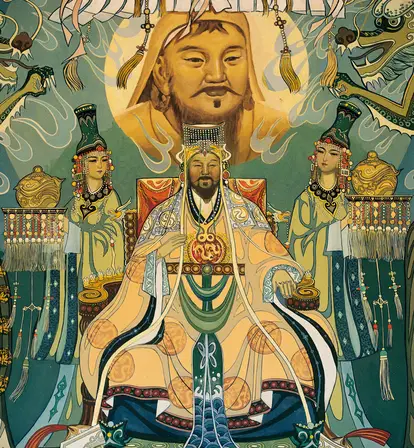During the 13th century, the Mongol Empire ruled over nearly all of Asia, but disputes over borders and succession paired with waning military power led to its collapse by 1368.
The Mongol Empire, the largest contiguous land empire in history, was born from the unification of the Mongol tribes under Genghis Khan in the early 13th century. Known for their unparalleled military prowess and relentless expansion, the Mongols swiftly conquered vast territories, from the steppes of Central Asia to the plains of Eastern Europe and down into the rich lands of China and Persia — but by the late 14th century, their empire was fractured, and it quickly began to decline. So, how did the Mongol Empire fall?
Genghis Khan’s vision of a united empire hinged on discipline, meritocracy, and the integration of diverse cultures. His successors, such as Ögedei and Kublai Khan, continued his legacy, pushing the empire’s boundaries even further. Mongol military tactics, characterized by swift cavalry attacks and psychological warfare, instilled fear and awe across continents.
However, the seeds of the empire’s downfall were sown within its vast expanse. The death of Genghis Khan led to the division of the realm among his heirs, creating four major khanates: the Yuan Dynasty in China, the Ilkhanate in Persia, the Chagatai Khanate in Central Asia, and the Golden Horde in western Eurasia. These regions, while initially cooperative, grew increasingly autonomous and competitive.
Succession crises plagued the empire, with each new khan’s ascent often accompanied by violent power struggles. Economically, the heavy taxation and mismanagement strained resources, while the Black Death ravaged populations and disrupted trade routes. Environmental factors like overgrazing further weakened agricultural productivity, compounding the empire’s woes.
Military defeats further signaled the Mongol Empire’s decline. The Mongols faced stiff resistance from the Mamluks in Egypt, failed invasions of Japan, and relentless internal rebellions. The rise of powerful new states, such as the Ming Dynasty in China and the Timurid Empire in Central Asia, likewise eroded Mongol dominance.
Ultimately, the fall of the Mongol Empire was a confluence of several tumultuous factors, which, in unison, toppled the legacy of Genghis Khan.
The Rise Of The Mongol Empire Under Genghis Khan
In the unforgiving plains of Mongolia, a fierce warrior named Temüjin dreamed of unity. He was born into a warring clan, and hardship forged him into a leader. At a young age, Temüjin witnessed the murder of his father and the betrayal of his clan, leaving him and his family destitute. Through strategic alliances and brutal battles, however, he united the nomadic tribes under his banner in 1206, earning the title Genghis Khan, meaning “Universal Ruler.” This marked the birth of the Mongol Empire.
Genghis Khan wasn’t just a ruthless conqueror, though; he was a military genius who transformed the Mongol cavalry into a sea of horsemen who wielded bows with deadly accuracy. Their lightning-fast attacks and innovative tactics overwhelmed enemies — even those with far larger and more established armies.
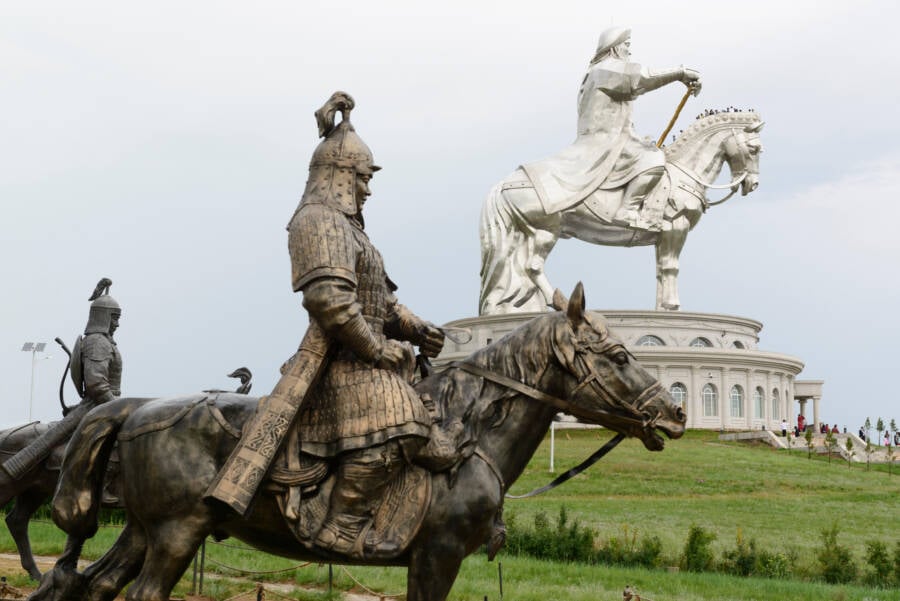
Bert de Ruiter/Alamy Stock PhotoThe Genghis Khan Equestrian Statue, part of the Genghis Khan Statue Complex near Ulaanbaatar, Mongolia.
Their empire stretched across Asia, but the Mongols weren’t simply destroyers. They were shrewd rulers who adopted a meritocratic system, promoting based on skill rather than birthright. Conquered peoples, impressed by this surprising fairness, often joined the Mongol ranks.
This period of relative peace, known as the Pax Mongolica, ushered in a golden age of unprecedented cultural exchange, trade, and communication across Eurasia. Trade routes, once perilous, became bustling arteries. Goods like silk and spices flowed freely along the Silk Road, connecting East and West in a manner the likes of which had never been seen before.
Unfortunately, it would inevitably have to come to an end. And it began with the death of Genghis Khan.
Kublai Khan And The Decline Of The Mongol Empire
Genghis Khan’s death in 1227 marked a major turning point for the Mongol Empire, though it didn’t fall immediately. Rather, the leader’s demise marked the start of a series of events and structural issues that eventually contributed to the empire’s fragmentation and decline.
Soon enough, Genghis Khan’s sons and grandsons became engaged in a power struggle to determine who would rule the empire in the wake of his passing — except for one, Ögedei Khan, who generally had no quarrel with his brothers. As such, Ögedei Khan emerged as the second ruler of the Mongol Empire, only for his own death in 1241 to once again plunge the realm’s leadership into uncertain chaos.

Public DomainÖgedei Khan, the second ruler of the Mongol Empire.
From that chaos emerged Kublai Khan, Ögedei’s nephew, who eschewed the more violent methods of his precursors and sought to rule through stability and economic revitalization.
Kublai Khan, however, was reverent of Chinese culture to a detrimental degree. He moved the capital of the Mongol Empire to China and declared himself emperor of a new Dynasty, the Yuan. His implementation of traditional Chinese customs proved controversial throughout the empire, with many wishing to return to the ways of Genghis Khan.
According to The Cambridge History of the Mongol Empire, other Mongol officials asked Kublai Khan, “The old customs of our empire are different from the Han laws. Now with your residence in the Han lands, establishment of cities within walls, and system of civilian courtesies, you are upholding the Han laws. What is the reason for this?”
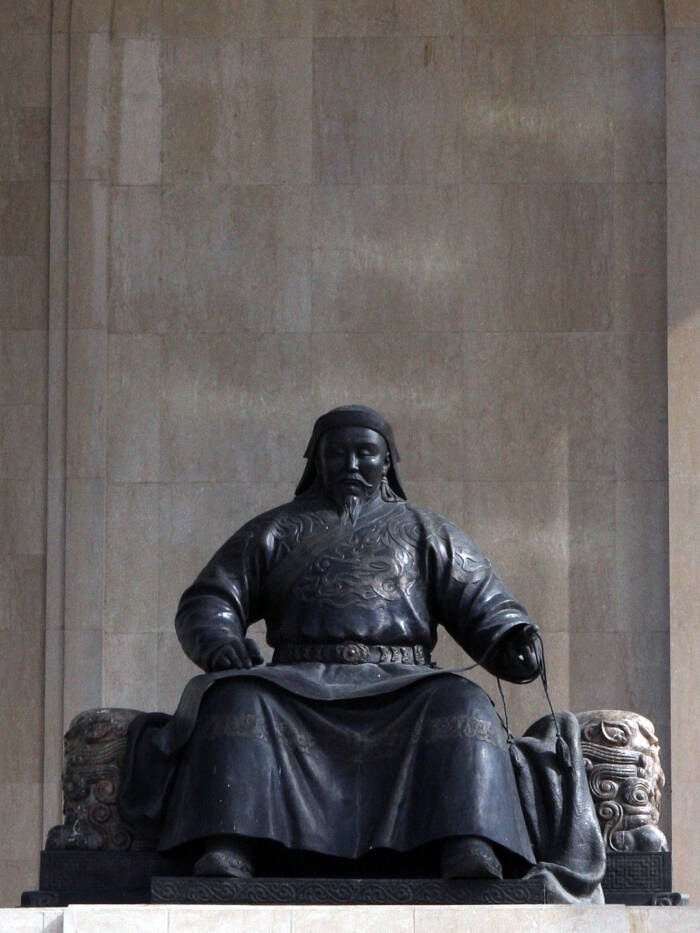
Wikimedia CommonsA statue of Kublai Khan at Sükhbaatar Square in Ulaanbaatar.
As the Great Khan, Kublai Khan introduced a number of reforms that enabled new technologies and culture to spread. These included the development of a universal alphabet, the introduction of paper money to make trade with the West easier, and countless investments into education, arts, and science. However, he also lacked the absolute power that his forebears held.
The Mongol Empire had fragmented, with four distinct khanates holding power over smaller domains.
Kublai Khan maintained sole control over much of China and Mongolia, but his grip elsewhere had been weakened. And as he settled down, the very things which had made the Mongols so fierce — their nomadic cavalry and tribal culture — began to fade. Kublai Khan’s attempts to conquer more of the world, particularly Japan, largely failed.
The leader attempted to conquer Japan twice, once in 1274 and again in 1281. Both invasions failed in part due to weather. Marco Polo wrote of the second attempt: “Now it happened one day that such a gale was blowing from the north that the [Mongol] troops declared that, if they did not get away, all their ships would be wrecked… and there was such a crowd of ships that many of them were smashed by colliding with one another.”
The failed invasions of Japan were costly, and Kublai Khan had to raise taxes to pay for them, angering the Chinese people and leading to rebellions. By the time of Kublai Khan’s death in 1294, his empire had begun to crumble.
How Did The Mongol Empire Fall?
Those who succeeded Kublai Khan lacked the leadership skills he had possessed. The rule of Temür Khan, Kublai Khan’s grandson, was marked by internal power struggles and corruption despite his ability to maintain relative stability in the empire. His rule lasted only 13 years, ending in 1307, after which he was succeeded by his younger brother, Külüg Khan, who reigned for just four years.
This pattern continued throughout the family, while corruption grew within the Yuan Dynasty government. Heavy rates of taxation, meanwhile, continued to foster discontent among the people and fueled numerous peasant uprisings. This continued until 1368, when the Yuan Dynasty was finally overthrown by the Ming Dynasty, officially marking the end of Mongol rule in China.
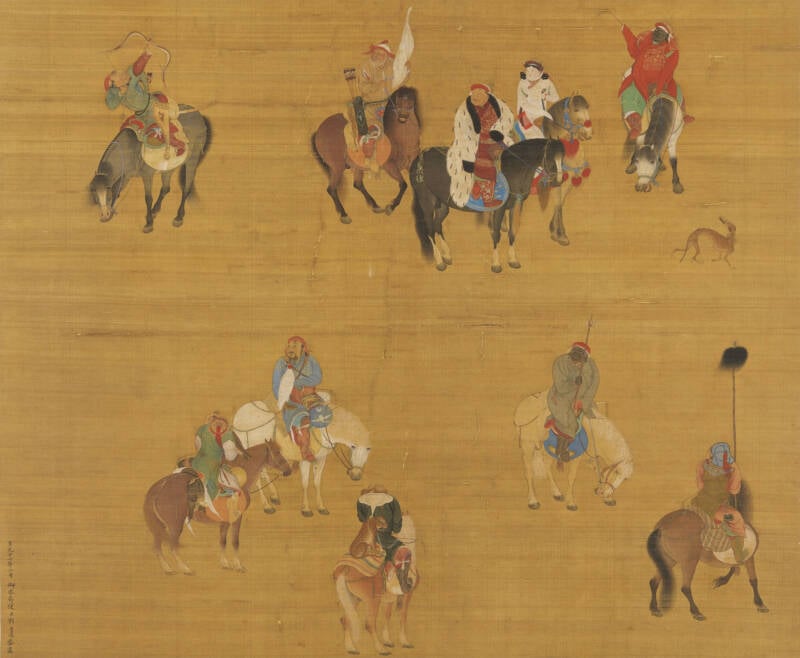
Public DomainAn illustration of Kublai Khan on a hunting expedition. 1280.
Elsewhere during this time, the other khanates — the Ilkhanate in Persia, the Chagatai Khanate in Central Asia, and the Golden Horde in western Eurasia — had likewise divested their interest in the larger empire, choosing instead to focus more on their own regions. As a result, cooperation among the khanates disintegrated, and conflict was frequent.
The issues that plagued the Yuan Dynasty were not isolated, either. Each of the khanates was rife with internal conflict and struggles for power, which only further weakened their ability to defend against external threats. For example, in the Ilkhanate, tensions rose when Ahmed Tekuder, son of Hulegu Khan, converted to Islam, upsetting traditionalist Mongol nobles. He was then subsequently overthrown by his nephew, Arghun.

Classic Image/Alamy Stock PhotoTamerlane, the first ruler in the Timurid dynasty, invading Persia in 1383.
Arghun was then succeeded by his brother Gaykhatu, who additionally faced economic difficulties as the transition to paper money led to further instability in the khanate. Throughout the remainder of the khanate’s lifespan, religious tensions, economic troubles, and increasing factionalism caused the already splintered region to split further, ultimately leading to the khanate’s collapse in the mid-14th century.
The same sort of process repeated itself in each khanate. And amid these ongoing conflicts, the once-thriving trade routes facilitated by the Mongol Empire began to suffer, leading to an overwhelming decline in trade and economic prosperity across the whole of Eurasia.
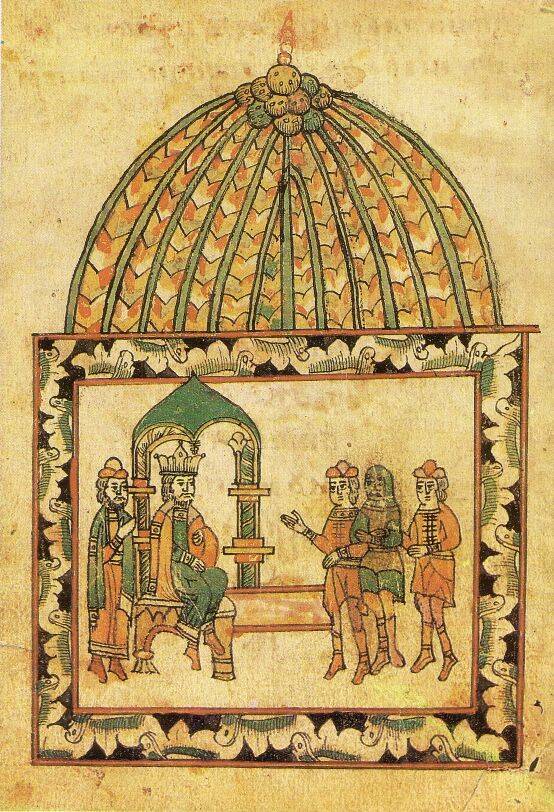
Public DomainGrand Prince Dmitry of Moscow capturing a member of the Golden Horde.
The Golden Horde seemed to withstand this decline the longest until the Black Death in the mid-14th century decimated populations and disrupted trade. Of course, the Golden Horde wasn’t without other issues. It faced significant external threat, especially as the Grand Duchy of Moscow, under Ivan the Great, saw increased resistance against Mongol rule — culminating in Mongol defeat at the Battle of Kulikovo in 1380.
By the mid-15th century, the Mongol Empire was no more. Its land and regions were divided into smaller dynasties and empires that would ultimately go on to rise and fall themselves.
After learning about the fall of the Mongol Empire, journey through the rise and fall of the Japanese Empire, one of the most genocidal regimes in history. Then, read about the Janissaries, the Ottoman Empire’s elite military force.
